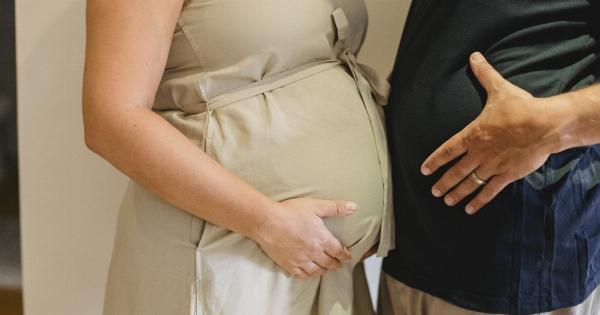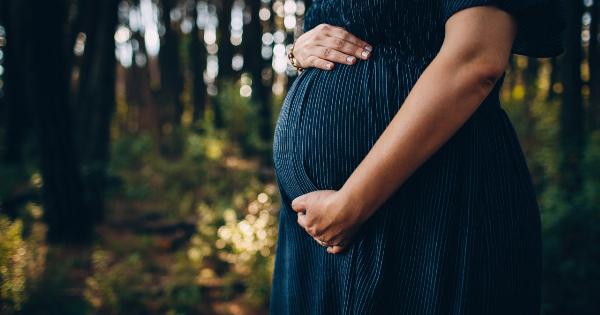Pregnancy is a beautiful and miraculous journey that many women embark on. It is a time of anticipation, excitement, and significant changes in a woman’s body. One of the most notable changes during pregnancy is the absence of menstrual periods.
Understanding the relationship between pregnancy and periods can help women navigate their journey with confidence and knowledge. In this article, we will explore the connection between pregnancy and periods, including why periods stop during pregnancy, signs of pregnancy, and possible bleeding during pregnancy.
Why do periods stop during pregnancy?
Menstruation occurs when the lining of the uterus sheds because fertilization did not occur. However, during pregnancy, the fertilized egg implants itself into the lining of the uterus, securing its place for the next nine months.
This implantation triggers hormonal changes in the woman’s body, specifically an increase in progesterone levels. Progesterone plays a crucial role in maintaining the uterine lining and preventing further shedding. As a result, the absence of menstruation is a clear indication that a woman may be pregnant.
Signs of pregnancy
While the absence of periods is a common sign of pregnancy, it is not the only indicator. Here are some other signs that may suggest a woman is pregnant:.
1. Missed period:
A missed period is often the first and most significant sign of pregnancy. However, it is essential to note that irregular periods or other factors can also cause missed periods.
2. Breast changes:
During pregnancy, the breasts may become tender, swollen, or experience increased sensitivity. These changes are caused by hormonal fluctuations and increased blood flow to the breast tissue.
3. Nausea and vomiting:
Morning sickness, although it can occur at any time of the day, is a common symptom of pregnancy. It is caused by hormonal changes and typically subsides after the first trimester.
4. Fatigue:
Feeling unusually tired or exhausted is a typical symptom of early pregnancy. Hormonal changes and increased metabolism contribute to this fatigue.
5. Frequent urination:
During pregnancy, the uterus expands, putting pressure on the bladder. This pressure can lead to an increased need to urinate frequently.
6. Food cravings and aversions:
Pregnancy hormones can cause changes in taste and smell. Some women may develop specific food cravings, while others may experience aversions to certain foods or smells.
7. Mood swings:
Hormonal fluctuations during pregnancy can lead to mood swings, ranging from extreme happiness to tearfulness or irritability.
8. Increased body temperature:
During pregnancy, a woman’s body temperature may slightly increase. This rise in temperature is attributed to an increase in hormone levels.
9. Positive pregnancy test:
Home pregnancy tests are highly accurate and can detect the presence of the pregnancy hormone hCG (human chorionic gonadotropin) in urine.
10. Physical changes:
As the pregnancy progresses, a woman’s body undergoes various physical changes such as a growing belly, weight gain, and changes in skin pigmentation.
Bleeding during pregnancy
While the absence of periods during pregnancy is expected, some women may experience bleeding or spotting. It is essential to distinguish between normal and abnormal bleeding during pregnancy.
1. Implantation bleeding:.
Implantation bleeding occurs when the fertilized egg implants itself into the lining of the uterus. This bleeding is typically lighter and shorter in duration compared to a regular period.
2. Threatened miscarriage:.
In some cases, bleeding during early pregnancy may indicate a threatened miscarriage. This bleeding is often accompanied by abdominal pain, and medical attention should be sought immediately.
3. Ectopic pregnancy:.
Bleeding accompanied by severe lower abdominal pain may be a sign of an ectopic pregnancy, where the fertilized egg implants outside the uterus. This condition is potentially life-threatening and requires immediate medical intervention.
4. Molar pregnancy:.
A molar pregnancy is a rare condition where an abnormal growth of tissue occurs inside the uterus. Bleeding, along with other symptoms such as severe nausea, vomiting, and rapid uterine growth, may indicate a molar pregnancy.
Conclusion
Pregnancy is a unique and transformative experience for women. Understanding the relationship between pregnancy and periods can help women recognize the signs of pregnancy and differentiate between normal and abnormal bleeding.
While the absence of periods during pregnancy is expected, any bleeding or spotting should be promptly discussed with healthcare professionals to ensure the well-being of both the mother and the baby.



























